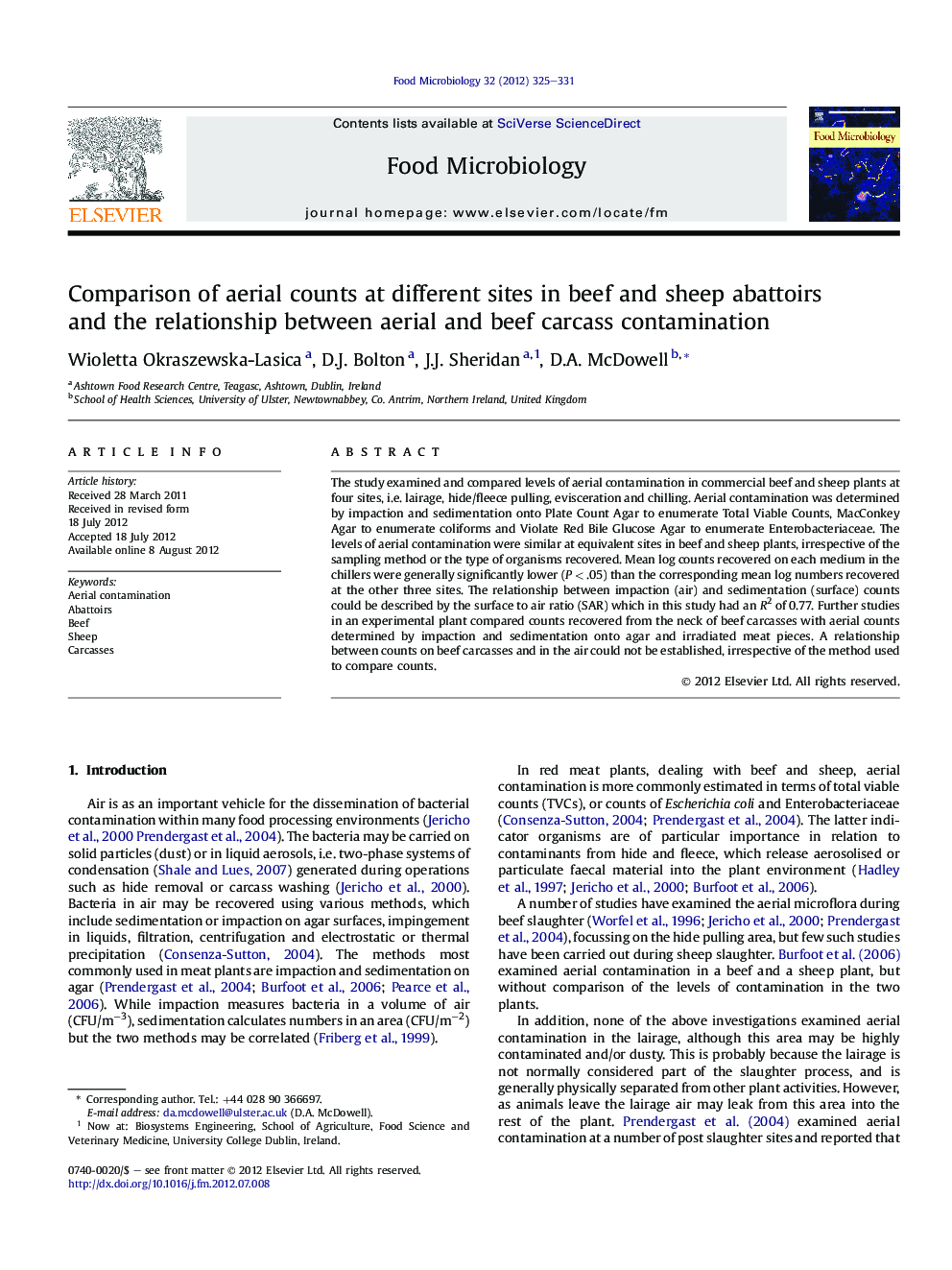| Article ID | Journal | Published Year | Pages | File Type |
|---|---|---|---|---|
| 6288985 | Food Microbiology | 2012 | 7 Pages |
The study examined and compared levels of aerial contamination in commercial beef and sheep plants at four sites, i.e. lairage, hide/fleece pulling, evisceration and chilling. Aerial contamination was determined by impaction and sedimentation onto Plate Count Agar to enumerate Total Viable Counts, MacConkey Agar to enumerate coliforms and Violate Red Bile Glucose Agar to enumerate Enterobacteriaceae. The levels of aerial contamination were similar at equivalent sites in beef and sheep plants, irrespective of the sampling method or the type of organisms recovered. Mean log counts recovered on each medium in the chillers were generally significantly lower (PÂ <Â .05) than the corresponding mean log numbers recovered at the other three sites. The relationship between impaction (air) and sedimentation (surface) counts could be described by the surface to air ratio (SAR) which in this study had an R2 of 0.77. Further studies in an experimental plant compared counts recovered from the neck of beef carcasses with aerial counts determined by impaction and sedimentation onto agar and irradiated meat pieces. A relationship between counts on beef carcasses and in the air could not be established, irrespective of the method used to compare counts.
⺠The levels of aerial contamination in beef and sheep abattoirs are similar at equivalent sites. ⺠Aerial counts are similar along the slaughter line, but lower in the chills. ⺠Separation of “dirty” and “clean” sites could reduce aerial cross-contamination. ⺠Impaction and sedimentation counts had a study/site specific surface to air ratio (SAR) (R2 = 0.77). ⺠No consistent relationships were observed between levels of aerial and carcass contamination.
